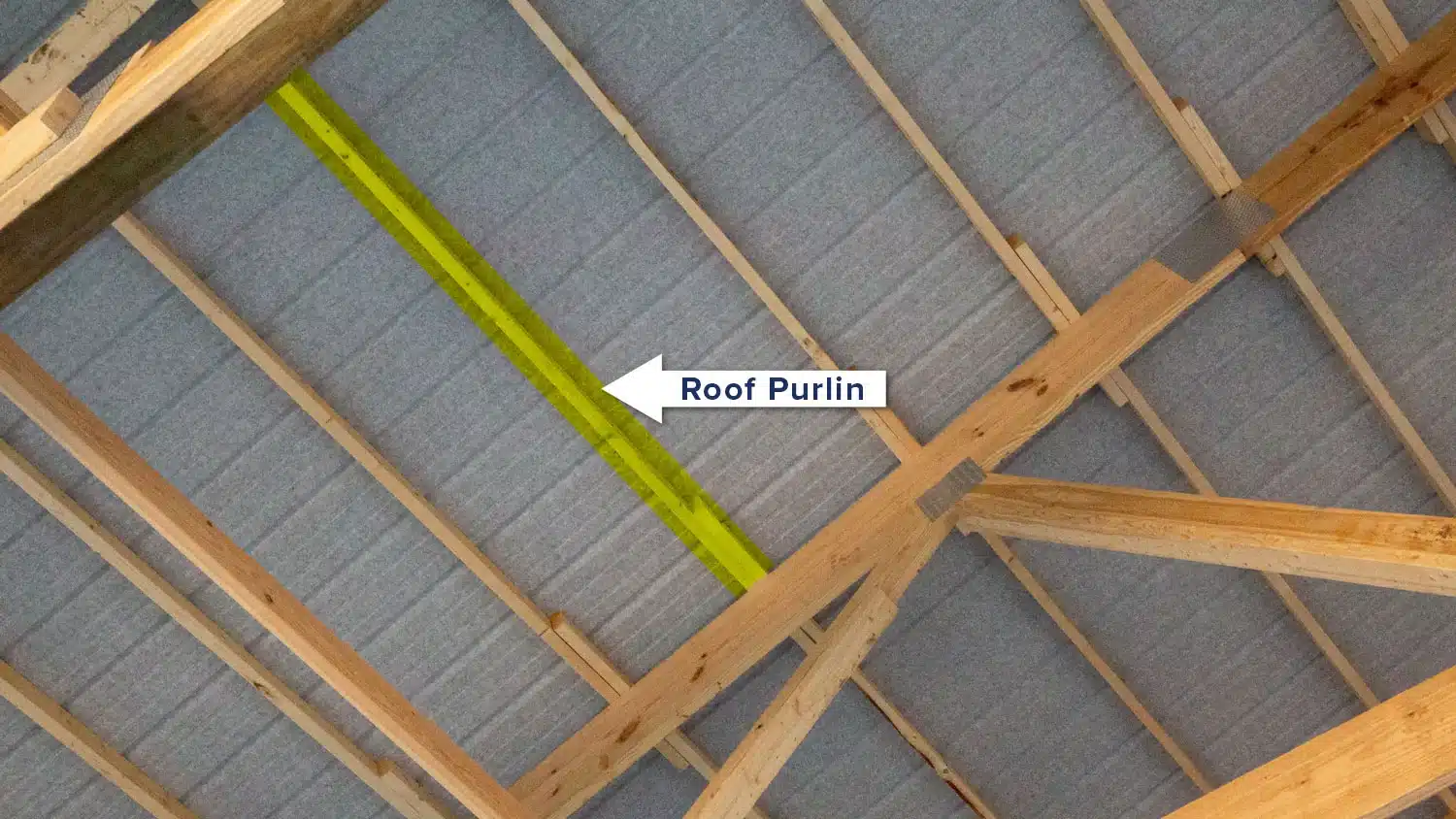Roof Purlins

Definition: Roof purlins are horizontal supporting elements placed on a roof’s rafters or trusses to hold roofing materials such as metal panels, shingles, or tiles. They are designed to evenly distribute the roof load, offer stability, and fasten the upper layers of the roof.
Roof Purlins Purpose and Functionality:
- Roof Purlins: Roof purlins add additional structural support to the roof, which avoids sagging and spreads the weight of the roof.
- Load Bearing: They are designed to transfer forces, such as wind, snow and other environmental stresses, to the primary roof structure (rafters or trusses).
- Surface of Attachment: Purlins provide a base upon which metal panels, roofing sheets, or shingles can be attached to stay secure.
Types of Roof Purlins:
- C-Purlins: Made of the letter “C”, they are often found on metal roofs due to its durability and ease of installation.
- Z-Purlins: Similar to a “Z” they distribute loads better and are commonly employed in large-scale roof installations.
- Hat Purlins: Like a hat, these add durability and are most commonly utilized for metal roof applications to give a greater degree of stability.
- Wood Purlins: Wooden purlins are traditionally a part of the house roofing; they’re usually hung above rafters to act as a substrate for shingles, tiles or other roofing materials.
Materials Used:
- Steel: Commonly incorporated in commercial and industrial structures for their durability and strength.
- Aluminum: Strong and corrosion-resistant for use in environments exposed to high humidity or salt.
- Wood: Most commonly used in residential old-fashioned shingle, tile, and occasionally metal roofs
Benefits of Roof Purlins:
- Improves Roof Stability: Purlins improve the roof stability by evenly spreading the load.
- Stops Roof Sagging: By supporting the roof’s underlying material, purlins stop the roof from sagging over time.
- Boosts Ventilation: In some designs, purlins make room for greater airflow and control the roof temperature.
Common Issues:
- Unsafe Spacing: Unsafe purlin spacing can create weak points, and compromise the load bearing ability of the roof.
- Metal Purlins Corrosion: If the metal purlins are used in a wet or marine climate, it may corrode or rust if they are not properly cleaned and/or treated.
- Wood Decay: If left unprotected by moisture, wood purlins can rot over time and must be treated or replaced.
Applications:
- Metal Roofing: Used to secure metal roof coverings in office, farm, and warehouse spaces.
- Domestic Roofing: Requires the traditional wooden roof with shingles, tiles, or metal clapboard.
- Pole Barns & Sheds: Used in barn and shed construction to hold thin metal roofs.
Roof purlins are an integral part of roofs, and offer crucial support and stability for the proper use of roofing materials. When properly erected, purlins provide the basis for a robust and lasting roof.
See our works
Giving you a sense of what a metal roof will look like in your home of commercial property





